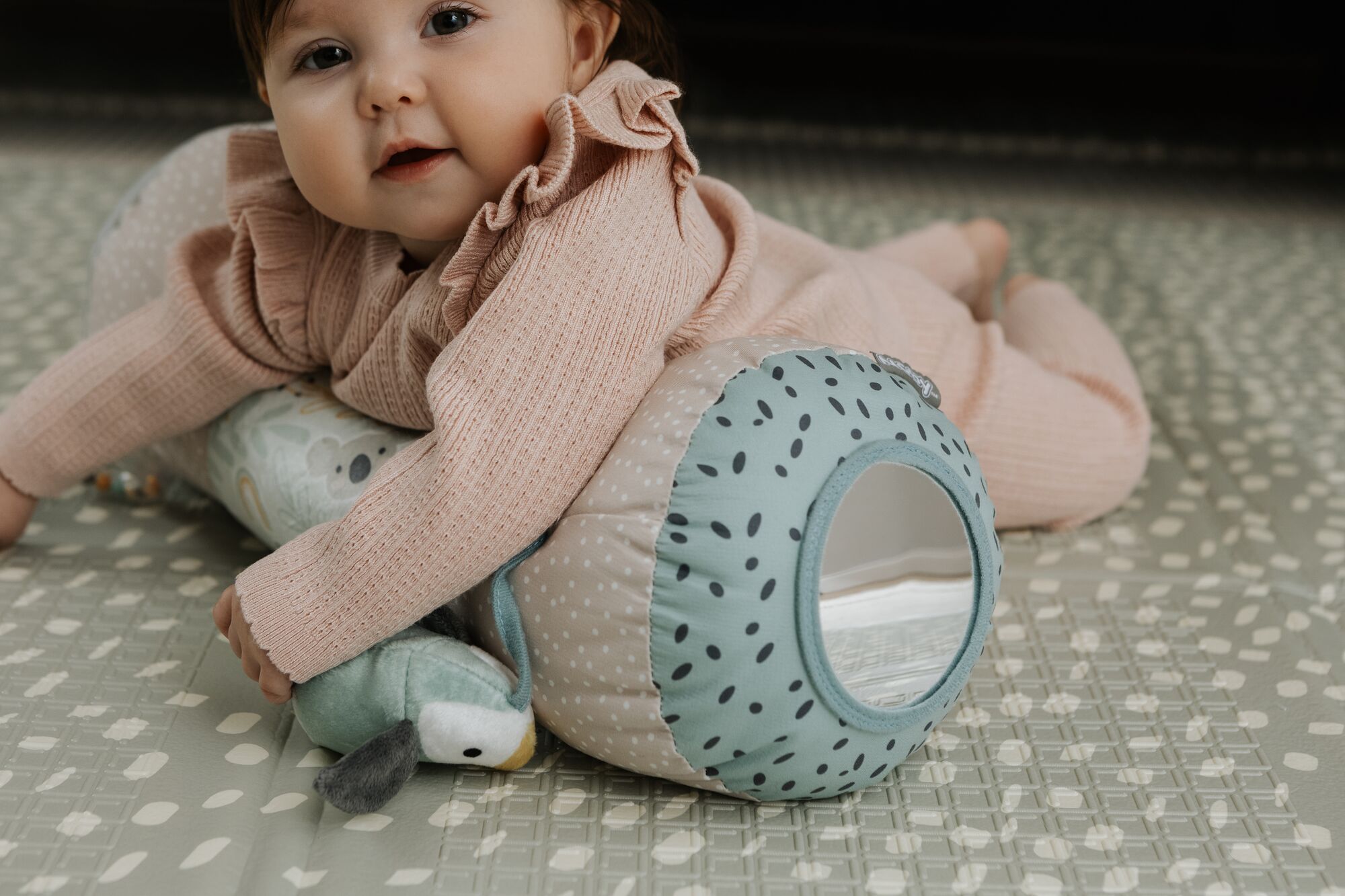Has someone ever mentioned gross motor skills to you and you’ve found yourself nodding along without really knowing what they are? You’re not alone.
Whether you’ve heard of gross motor skills before or not, we’re here to give you the lowdown on gross motor skills and how they come into play as your baby grows.

So, what are gross motor skills?
Gross motor skills are the big, bold movements babies make with their arms, legs, neck and body. In the womb, babies are curled up with not much room to move towards the end, so once they’re born, there’s a lot of learning to do.
These early movements help babies build strength, balance and coordination. At first it’s all about kicking and wriggling but before you know it, they’ll be rolling, crawling and walking aroud the house.
Gross motor skills: 0–2 months
What you might notice:
- Kicks arms and legs while on their back – Those kicks you felt during pregnancy? Now you can see them in person.
- Turns head from side to side – Whether they’re on their back or having tummy time, babies start practising head movement early on.
Gross motor skills: 3–5 months
As your baby becomes more active, they’ll begin building the strength they need for bigger movements.
Look out for:
- Rolling from belly to back – Usually starts between three and four months.
- Rolling from back to belly – Around five months, they’ll likely be able to flip the other way too.
Activities to help gross motor skills: 0–5 months
You can help your baby build these skills with toys.
- Tummy time pillow – Tummy time is important in these early months. A soft, supportive tummy time pillow helps your baby practise lifting and turning their head and eventually rolling over too.
Penguin Tummy Time Activity Pillow
- Play gym – While on their back, babies can stretch, kick and reach for toys hanging above them. It’s a fun way to build those muscles while keeping them entertained. You can also practice tummy time with a play gym too, so it’s a win, win.
Animal Adventures Baby Play Mat with Gym
Gross motor skills: 6–12 months
As your baby grows, their coordination will start to become more and more noticeable.
Here’s what you might see:
- Sitting up independently – From around six to eight months, they’ll start sitting on their own.
- Crawling on their belly – Think mini commando crawl, usually between six and eight months.
- Crawling on hands and knees – Between nine and 11 months, they’ll likely be crawling on all fours.
- Cruising along furniture – Around the same time, babies often use furniture to pull themselves up and shuffle around.
- Moving between lying down and sitting up – This one takes strength and balance, but by 10 to 12 months they’re usually giving it a go.
- Walking with or without help – Some babies take their first solo steps by 12 months while others can walk with you holding their hands.
Activities to help gross motor skills: 6–12 months
- Sit me up seat – Great for encouraging longer periods of independent sitting. These often come with toys in front to keep your baby focused and happy.
Animal Adventures Baby Sit Me Up Floor Seat
- Baby ball pit – Once your baby can sit up and move around on their own, a ball pit becomes a fun space for practising movement, balance and reaching.
Kids Ball Pit with 200 Balls
- Baby walker – As your baby prepares for those first steps, a baby walker can give them the support they need. Some come with built in toys so they can work on fine motor skills too.
Wooden Baby Walker
Remember, every baby develops at their own pace, so try not to stress about timelines. Some babies race ahead while others take things slow and steady. If you’re ever unsure or concerned, have a chat with your health visitor or GP.
Looking for more ways to encourage your babies gross motor skills? Take a look at our animal adventures wooden play gym, ocean friends inflatable tummy time pillow and animal adventures tummy time water mat.





